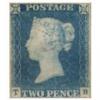Balance end shake adjustments and jewel setting
-
Recently Browsing
- No registered users viewing this page.
-
Topics
-
Posts
-
Hello, Thanks for the reply. The old jewel will get pushed out from the "outside" which is the dial side. The new jewel will get pressed in from the inside (shown below) which is the movement side, correct? And the old jewel and spring will get pushed from the is the "outside" which is the dial side. Thank you very much for the information. I will take out the KIF spring and save it. Will update when the new jewel is in place! Regards, Joe
-
It's a little circlip style retaining clip to keep the pinion from riding up out of position.
-
By Neverenoughwatches · Posted
Couldn't see it on the tech sheet , picture is a bit fuzzy though . Is that to keep the pinions pressed on Marc ? -
By nevenbekriev · Posted
Doctor, If the train turns when hands setting, this means that the train is not blocked. And this is true for all kinds of trains design. The train is normally blocked by the lever. So, put the lever in place and try again. If the train turns again, search where You have placed some wheel upside down and it is not meshed with the next one in the chain. The other thing is the amount of friction that is needed to overcome when setting hands. Yes, the friction part here is in the great wheel, and it needs lubrication. If the parts are dry, then friction will arise, seizing will happen and thus risk of breaking of teeth in the train or breaking of joint wheel/pinion. I don't know this calibre, but I guess the clip is part of the friction device. But for sure it stays tilted, which is not normal. So, pay attention to it and see what is wrong there -
It most certainly should be there, but it should fit better than that. Here is what it should look like.
-








Recommended Posts